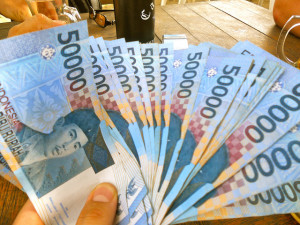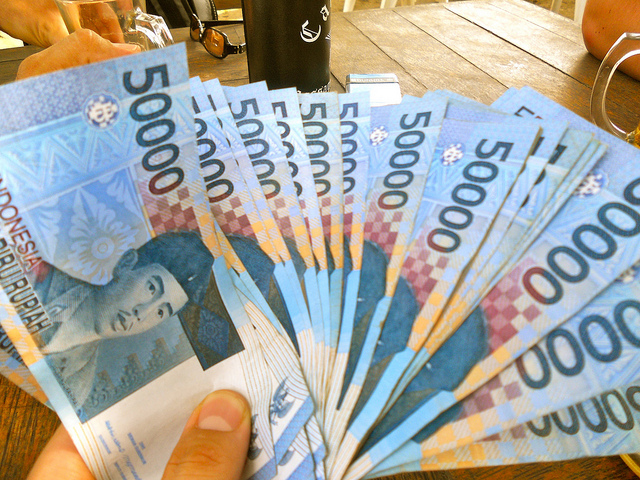 Indonesia’s trade balance in April recorded the country’s fifth straight surplus, but the amount was a sharp drop from March as imports declined sharply.
Indonesia’s trade balance in April recorded the country’s fifth straight surplus, but the amount was a sharp drop from March as imports declined sharply.
Indonesia posted a higher-than-expected US$454.4 million trade surplus in April 2015, up from previous predictions of around $120 million. However, the trade surplus was smaller than the (revised) $1 billion trade surplus recorded in March.
Moreover, the April surplus is primarily caused by a large drop in imports, signaling that Indonesia’s economic performance remains sluggish at the start of the second quarter, according to an analysis by investment and development company Van der Schaar Investments.
Indonesia’s exports contracted by 8.5 percent year-over-year to $13.1 billion, while the country’s imports fell 22.3 billion year-over-year to $12.6 billion in April (imports have now slid for seven consecutive months).
Although it is a positive that there was a 43.6 percent drop in refined oil imports due to the government’s subsidized fuel price reforms earlier this year, imports of raw materials, capital goods, and consumption goods were down as well, said Van der Schaar.
Less imports of capital goods and raw materials indicate that investment realization in Indonesia has slowed, it added. “For example, the start of many highly anticipated government-led infrastructure projects, which require significant amounts of imports (and are expected to cause a multiplier effect in the economy), are still being awaited. During the first four months of 2015, the central government only spent about 2 percent of its planned 2015 infrastructure spending.”
In combination with weakening exports, the report concluded that these figures indicate that the global and domestic economies remain bleak. Weak export performance is one of the main reasons why Indonesia has major difficulties to reverse the economic slowdown that has been ongoing since 2011. Sluggish economic growth, especially in China, causes weak global demand for commodities and thus trigger low commodity prices. Being an important commodity exporter, Indonesia’s economy is highly susceptible to such price fluctuations. Exports account for about 20 percent of Indonesia’s gross domestic product (GDP).
Still, after five consecutive monthly trade surpluses, the trade surplus has accumulated to $2.8 billion in the first four months of 2015, much better compared to the $1.89 billion deficit in full-year 2014 and the $4.08 billion deficit in full-year 2013, said the report.
Bank Indonesia, the country’s central bank, said in a statement that further declines were stifled by export gains affecting several commodities, such as animal and vegetable fats and oils, rubber and rubber derivatives as well as footwear. The export decline was also accompanied by an import decline of 0.46% (mtm) to $10.29 billion, predominantly affecting mechanical machinery/equipment, motor vehicles and auto components as well as fertilizer.
The oil and gas trade deficit increased to $880 million from $280 million in the previous month. A decline in oil and gas exports, coupled with an increase in oil and gas imports, enlarged the corresponding deficit. Oil and gas exports decelerated from the previous period in line with fewer exports of crude oil and gas. Meanwhile, oil and gas imports increased due to imports of oil derivatives and gas.
In its outlook, Bank Indonesia said it considers the trade surplus in April 2015 “conducive to current account performance in Q2/2015.” Furthermore, it is “assured that the future trade structure of Indonesia will become increasingly sound, thereby supporting a recovery in the external balance.”
Photo: Jason Paris





